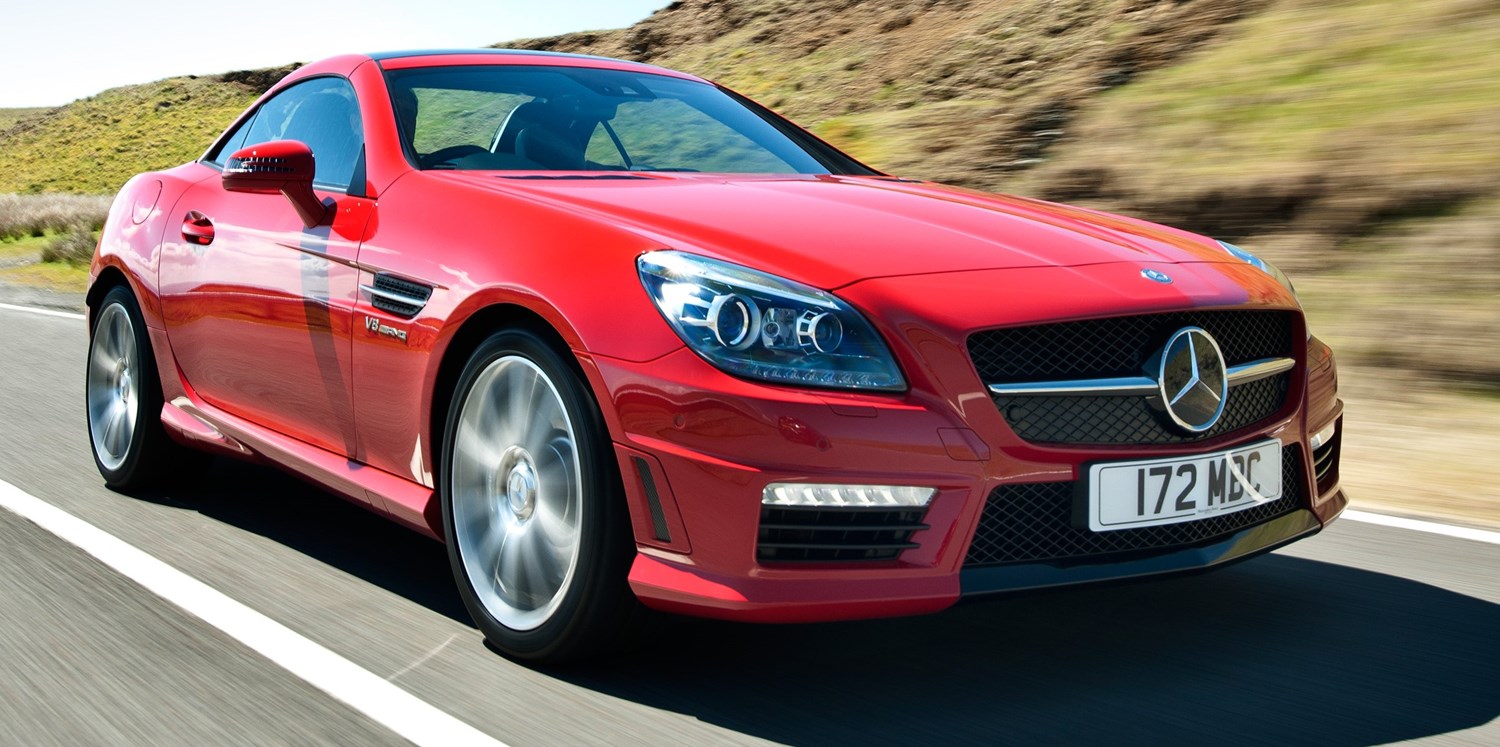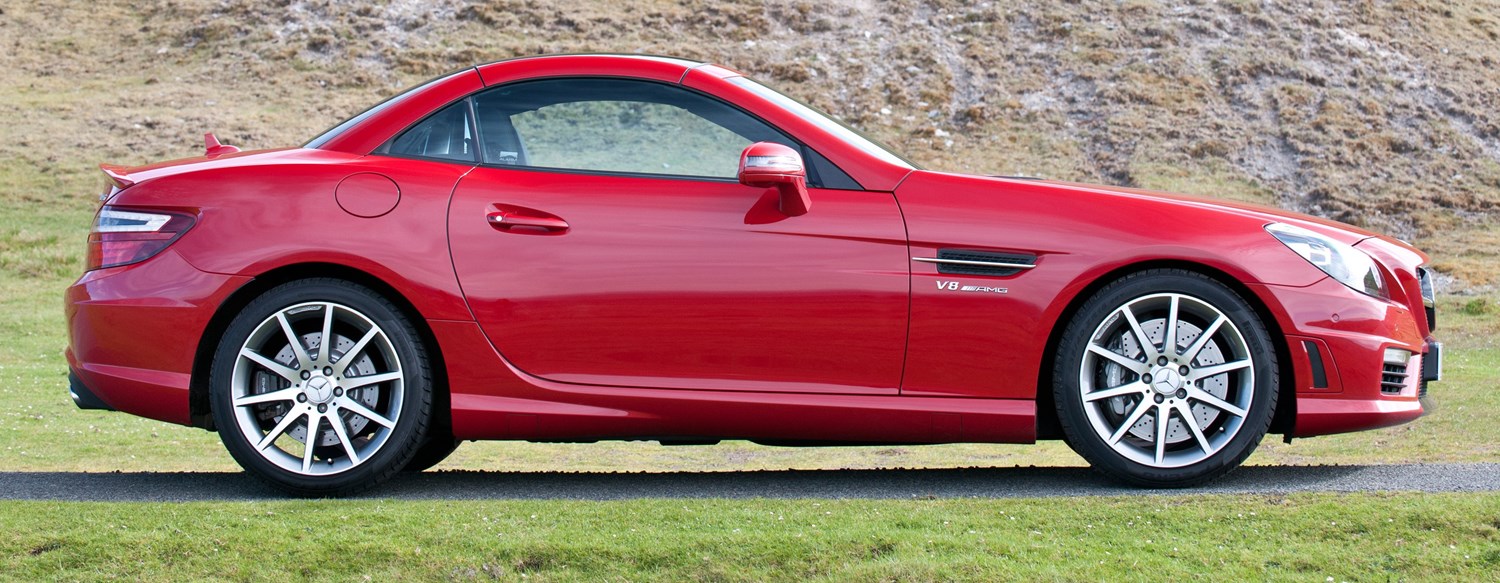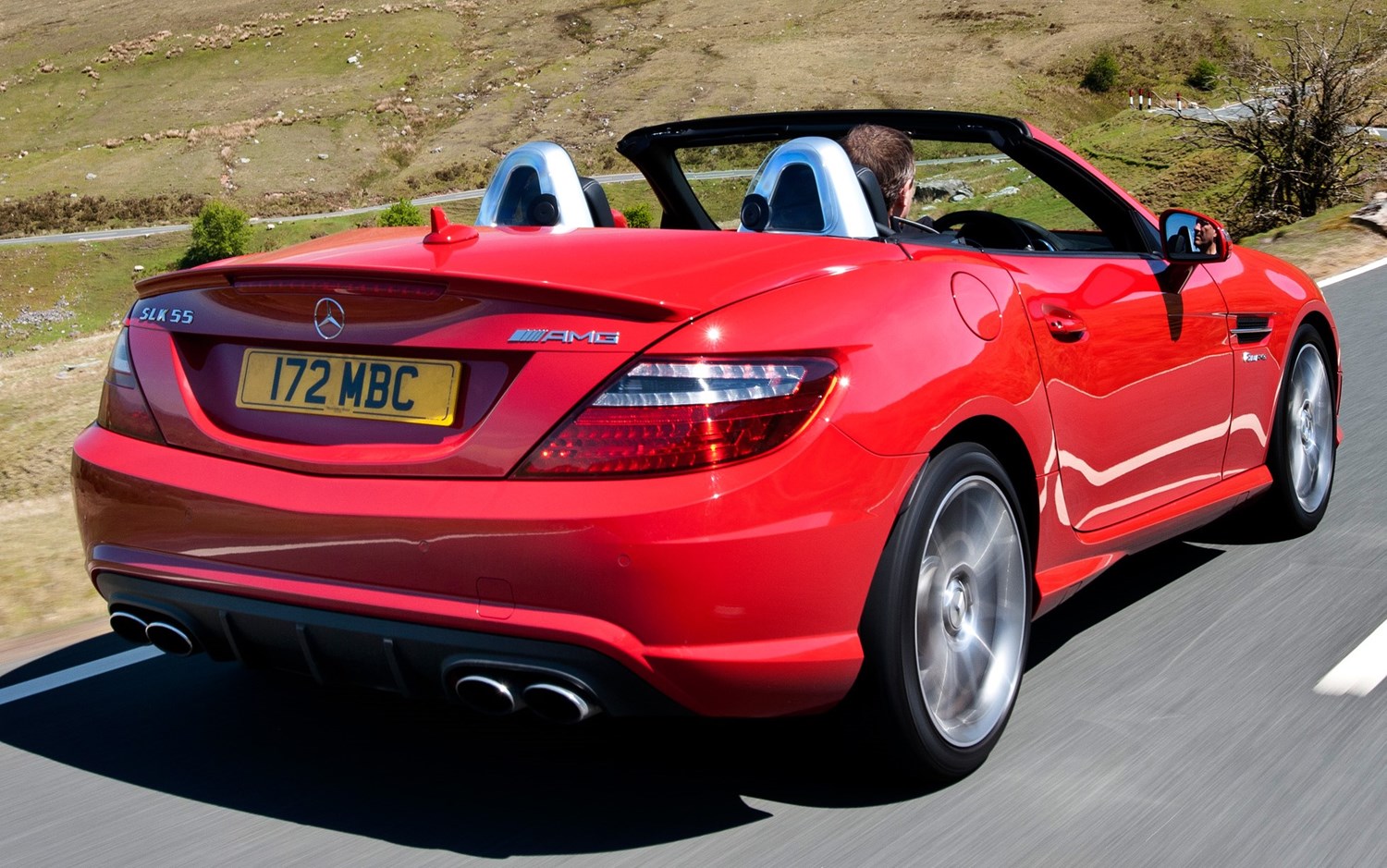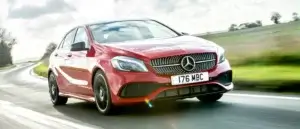Model review
The SLK – named for its design parameters of 'sportlich' (sporty), 'leicht' (light) and 'kurz' (short) – was introduced in 1996 as part of the regeneration of the small roadster category, and in fact the Mercedes-Benz brand itself.
Cars like the Mazda MX-5 revived the British lust for convertibles and created the conditions for the SLK's creation, which subsequently also saw small convertibles from Porsche, Audi and BMW. The first SLK was revealed as a concept in 1994, before going to full production in 1996. Unexpectedly it retained its concept car party-piece, the 'Vario-Roof'.
While commonplace today, the SLK's Vario-Roof was a showstopper: an automatic folding metal hard-top that retracted into the boot space to give both fixed roof security and convertible freedom. The roof could go from one position to the other in 25 seconds.
It arrived a time when Mercedes was merely making saloon cars – the C-Class, E-Class and S-Class – alongside the Vito van and classic G-Class 4x4. Along with the much larger SL-Class, the SLK provided a sporting edge to the brand that has been evident ever since. The original car used a brace of four-cylinder petrol engines, but after a facelift in 2000 it gained a V6 and an AMG-tuned, supercharged version to create the SLK32 AMG.
The second generation car arrived in 2004 and is immediately obvious by the F1-inspired front-end. This features a tapering nose, ending in the Mercedes tri-star, with a pair of winglets either side in the grille, similar to the £300,000, 200mph McLaren-Mercedes SLR performance GT car produced the same year.
The new car retained the folding metal roof, but most of the engines were now six-cylinder units, with only the entry level car retaining its four-pot. AMG upgraded the SLK to take a 5.5-litre V8 and this SLK55 became the first in the 'Black Series' of even higher-powered AMG cars.
The SLK was renewed for a third generation in 2011, bringing a new, stubbier front end that again aped a Mercedes performance GT, this time the SLS AMG. Mercedes stuck with the folding metal roof format again, but this time added diesel power to attract buyers looking for low emissions and low tax rates for their convertible sports car.
When Mercedes revised its named system the SLK was one of the anomalies, so when the car was face-lifted in March 2016, 20 years after the first car, the SLK name was retired in favour of the SLC.





